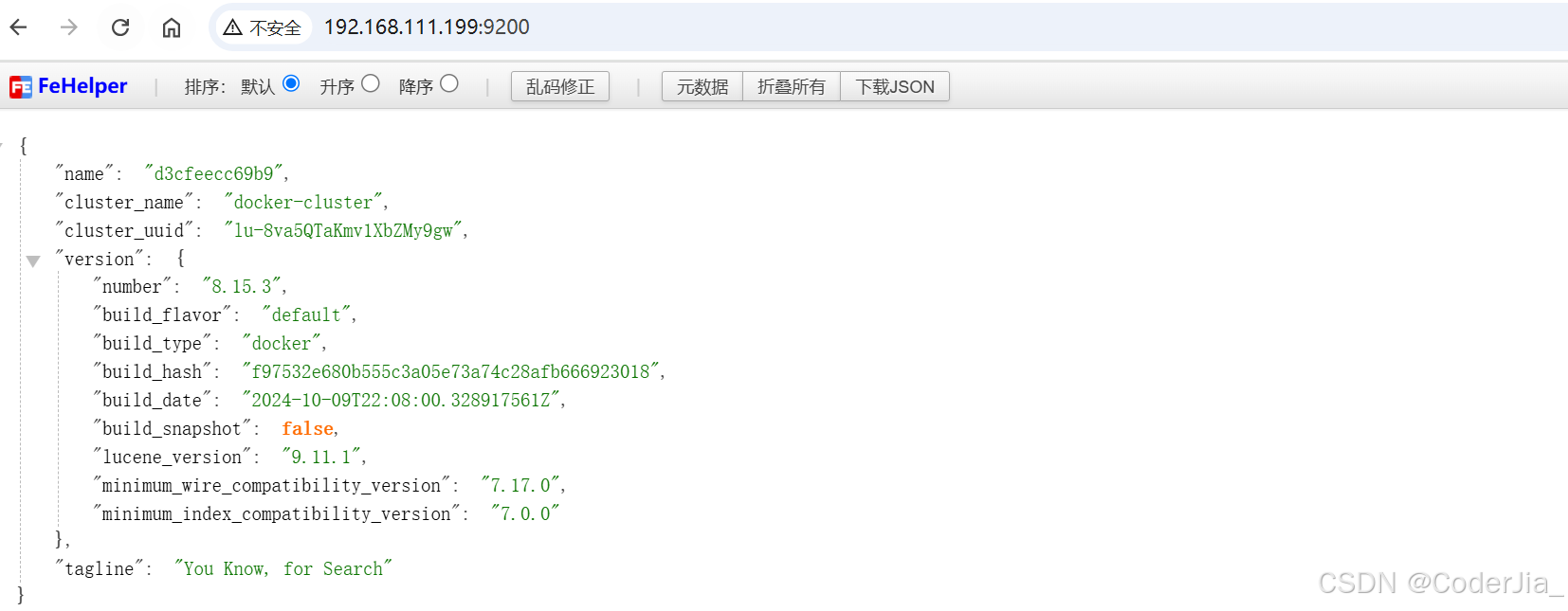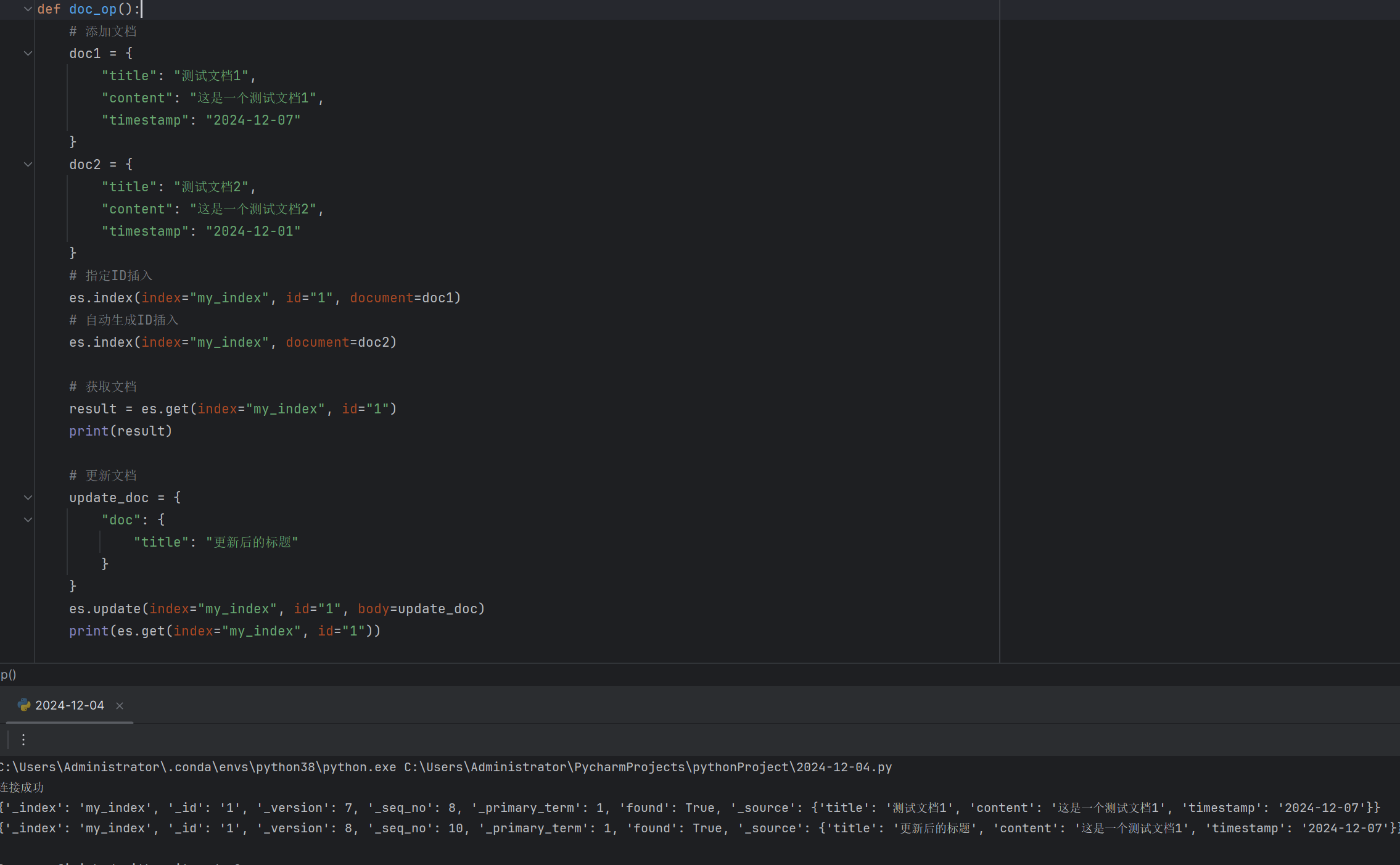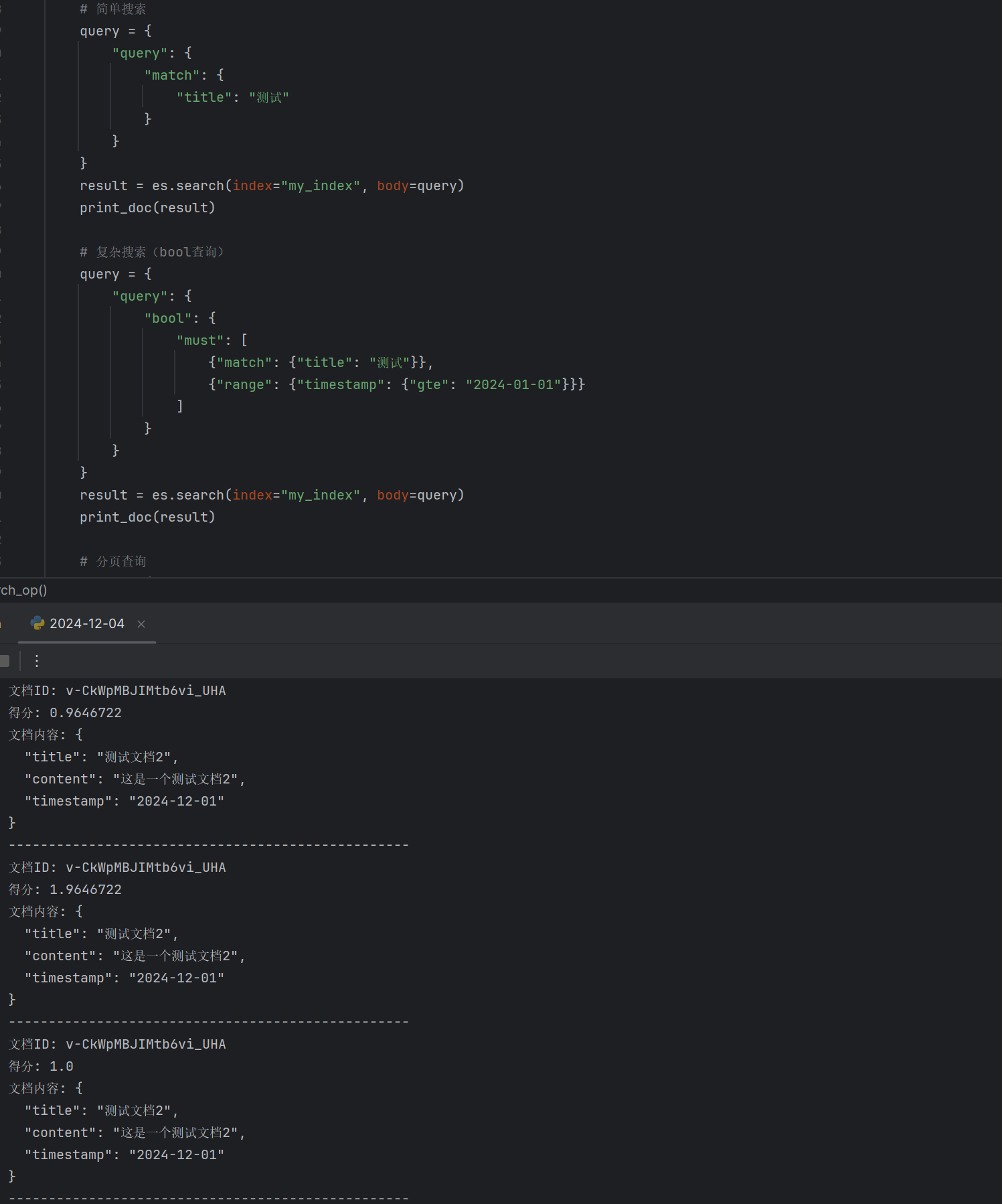Python连接和操作Elasticsearch详细指南
一、服务器端配置1. 修改 Elasticsearch 配置文件2. 开放防火墙端口 二、本地 Python 连接 Elasticsearch1. 连接 Elasticsearch2. 索引操作3. 文档操作4. 搜索内容5. 聚合查询6. 批量操作 三、注意事项四、故障排除结论
Elasticsearch 是一个强大的搜索引擎,广泛应用于数据存储和搜索场景。通过 Python,我们可以方便地与 Elasticsearch 进行交互。本文将详细介绍如何在本地使用 Python 连接到服务器上的 Elasticsearch,并进行基本的操作。
一、服务器端配置
在开始之前,确保你的 Elasticsearch 服务已经在服务器上正确安装和配置。

以下是一些基本的配置步骤:
1. 修改 Elasticsearch 配置文件
找到 Elasticsearch 的配置文件 elasticsearch.yml,并进行如下修改,以允许远程访问:
network.host: 0.0.0.0http.port: 9200discovery.type: single-node2. 开放防火墙端口
确保服务器的防火墙已经开放了 Elasticsearch 的默认端口 9200。如果你使用的是云服务器,也需要在安全组中开放该端口。
你可以通过在浏览器中输入 http://<你的服务器IP>:9200 来测试是否能够正常访问 Elasticsearch。如果配置正确,你应该能看到如下 Elasticsearch 的欢迎页面。

二、本地 Python 连接 Elasticsearch
在确保服务器端配置无误后,接下来我们在本地使用 Python 连接到 Elasticsearch。首先,你需要安装 elasticsearch Python 客户端库:
pip install elasticsearch1. 连接 Elasticsearch
以下是连接到 Elasticsearch 的示例代码:
from elasticsearch import Elasticsearch# 连接到 Elasticsearch,替换为实际的 IP 地址和密码es = Elasticsearch('http://192.168.111.199:9200', basic_auth=('elastic', 'Elastic_j625sz'))# 检查连接if es.ping(): print('连接成功')else: print('连接失败')在上述代码中,basic_auth 参数用于传递用户名和密码。如果你的 Elasticsearch 没有设置密码,可以省略该参数。

2. 索引操作
# 创建索引 es.indices.create(index="my_index") # 删除索引 es.indices.delete(index="my_index") # 检查索引是否存在 es.indices.exists(index="my_index")
3. 文档操作
连接成功后,我们可以开始进行数据存储和搜索操作。以下是一个创建索引并插入数据的示例:
# 添加文档 doc1 = { "title": "测试文档1", "content": "这是一个测试文档1", "timestamp": "2024-12-07" } doc2 = { "title": "测试文档2", "content": "这是一个测试文档2", "timestamp": "2024-12-01" } # 指定ID插入 es.index(index="my_index", id="1", document=doc1) # 自动生成ID插入 es.index(index="my_index", document=doc2) # 获取文档 result = es.get(index="my_index", id="1") print(result) # 更新文档 update_doc = { "doc": { "title": "更新后的标题" } } es.update(index="my_index", id="1", body=update_doc) print(es.get(index="my_index", id="1")) # 删除文档 es.delete(index="my_index", id="1")
4. 搜索内容
接下来,我们可以通过搜索来查找我们存储的数据。
在这之前,定义一个打印文档的方法:
def print_doc(result): for hit in result['hits']['hits']: print(f"文档ID: {hit['_id']}") print(f"得分: {hit['_score']}") print(f"文档内容: {json.dumps(hit['_source'], indent=2, ensure_ascii=False)}") print("-" * 50)下面是常用的搜索方式:
# 简单搜索 query = { "query": { "match": { "title": "测试" } } } result = es.search(index="my_index", body=query) print_doc(result) # 复杂搜索(bool查询) query = { "query": { "bool": { "must": [ {"match": {"title": "测试"}}, {"range": {"timestamp": {"gte": "2024-01-01"}}} ] } } } result = es.search(index="my_index", body=query) print_doc(result) # 分页查询 query = { "query": {"match_all": {}}, "from": 0, # 从第几条开始 "size": 10 # 返回多少条 } result = es.search(index="my_index", body=query) print_doc(result)在这个示例中,我们搜索了包含“测试”这个词的文档,并打印出搜索结果。

5. 聚合查询
# 聚合查询示例 query = { "aggs": { "popular_titles": { "terms": { "field": "title.keyword", "size": 10 } } } } result = es.search(index="my_index", body=query)
6. 批量操作
# 批量插入 actions = [ {"_index": "my_index", "_source": {"title": "文档1"}}, {"_index": "my_index", "_source": {"title": "文档2"}}, ] from elasticsearch.helpers import bulk bulk(es, actions)
三、注意事项
在使用 Elasticsearch 时,有几个注意事项需要牢记:
确保 Elasticsearch 服务正在运行:在进行任何操作之前,确保 Elasticsearch 服务已经启动。检查网络连接:确保本地机器与服务器之间的网络连接畅通。认证信息:如果 Elasticsearch 配置了认证,连接时必须提供正确的用户名和密码。安全措施:在生产环境中,建议配置合适的安全措施,例如使用 HTTPS 和防火墙规则。记得在完成操作后关闭连接:es.close()四、故障排除
如果在连接或操作 Elasticsearch 时遇到问题,可以尝试以下方法进行排查:
使用 telnet 测试端口连通性:
telnet <你的服务器IP> 9200检查 Elasticsearch 的日志文件,查看是否有错误信息。
确认 elasticsearch.yml 配置文件中的设置是否正确,并重启 Elasticsearch 服务以应用更改。
结论
通过以上步骤,你应该能够成功使用 Python 连接到 Elasticsearch,并进行基本的文档存储和搜索操作。Elasticsearch 提供了强大的搜索能力,结合 Python 的灵活性,可以帮助你构建高效的数据检索系统。希望这篇文章能帮助你更好地理解如何使用 Python 操作 Elasticsearch。